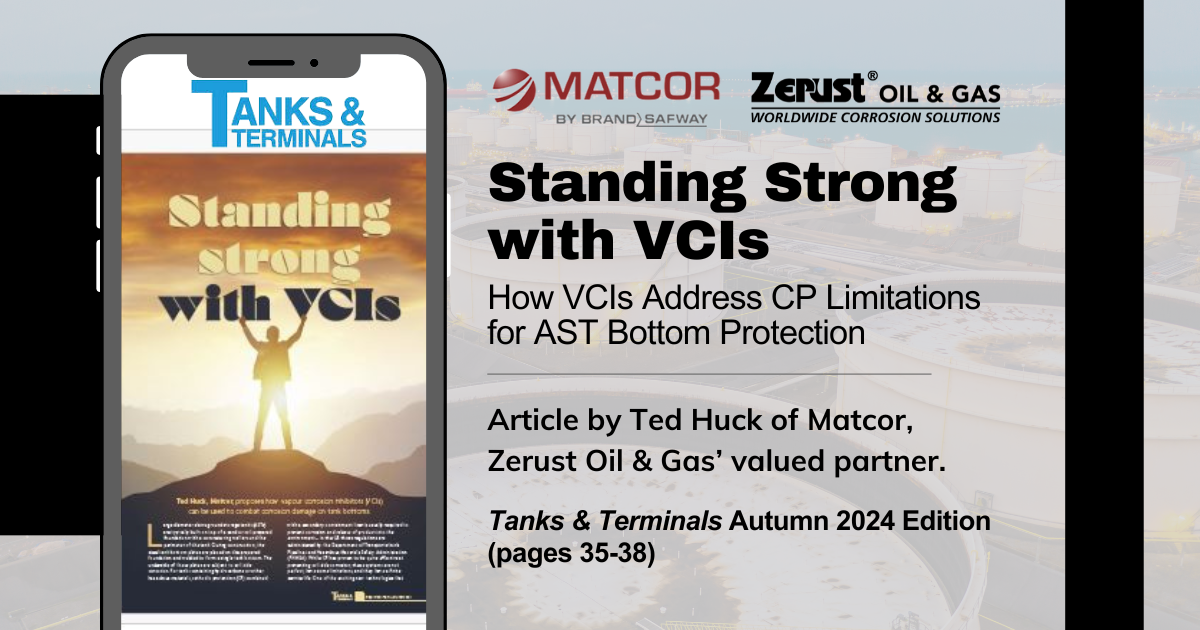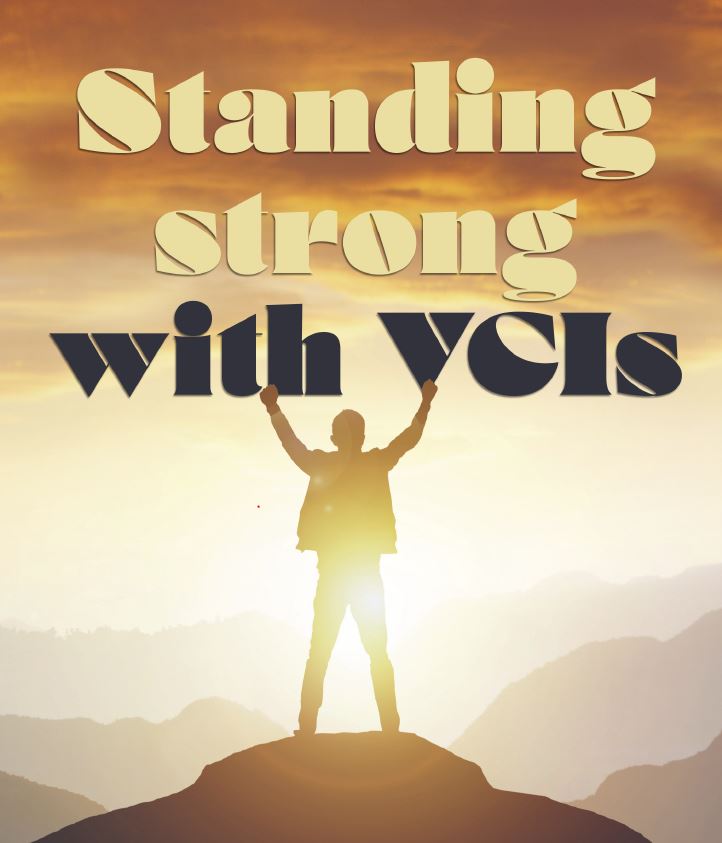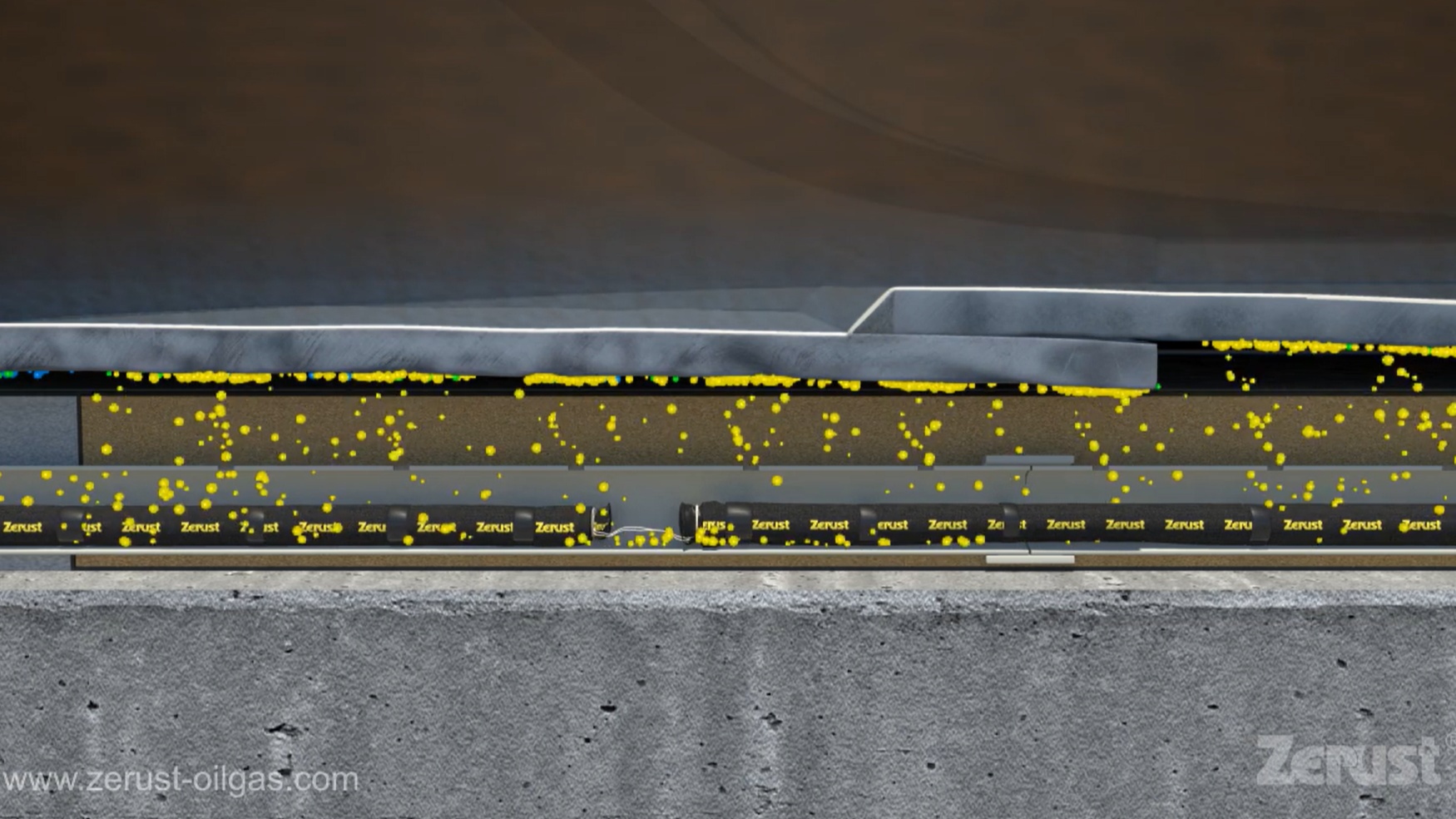PROTECTING TANK BOTTOMS: HOW VAPOR CORROSION INHIBITORS (VCIS) ADDRESS CATHODIC PROTECTION (CP) LIMITATIONS

Protecting AST Bottoms: How Vapor Corrosion Inhibitors (VCIs) Address Cathodic Protection (CP) Limitations
Ted Huck, Electrical Engineer and Director of Manufacturing and Sales at Matcor - one of Zerust Oil & Gas' valued partners - delves into the effectiveness of vapor corrosion inhibitors (VCIs) in preventing corrosion damage on tank bottoms in the Tanks & Terminals Autumn 2024 edition.
"Standing Strong with VCIs" by Ted Huck
Large diameter aboveground storage tanks (ASTs) are built on sand or soil foundations, with the steel tank bottom plates prone to soil-side corrosion. For tanks containing hazardous materials, cathodic protection (CP) systems combined with secondary containment liners are typically required to prevent corrosion and environmental contamination. These regulations are overseen by the Department of Transportation’s Pipelines and Hazardous Materials Safety Administration (PHMSA). While CP is effective, it has limitations. A new solution, vapour corrosion inhibitors (VCIs), offers enhanced protection for AST tank bottoms.
The article "Standing Strong with VCIs" by Ted Huck discusses the corrosion challenges faced by aboveground storage tanks (ASTs) and how Vapour Corrosion Inhibitors (VCIs) can offer additional protection, supplementing or replacing traditional cathodic protection (CP) methods.
Key highlights include:
-
Cathodic Protection (CP) Limitations: CP has a good track record for protecting the external bottom of ASTs. This is recognised by the regulatory bodies that mandate it and by industry standards from organisations such as the American Petroleum institute (API), American Water Works Association (AWWA), and Association for Materials Protection and Performance (AMPP) that all have detailed specifications discussing the appropriate use of CP for this purpose. While effective, CP systems can fail due to poor soil contact, inadequate padding materials, sump installation issues, power outages, or premature system failure.
-
What VCIs Are: VCIs are chemical compounds that vaporize and diffuse under the tank bottom, forming a protective barrier on the metal surface, even in areas where CP may be ineffective. Zerust Oil & Gas showcases an animation demonstrating "How VCIs Work". Click here to take a look.

-
Application Methods: VCIs can be applied as powder or liquid slurry in new construction or retrofitted into existing tanks via ports. PVC tubes allow for future replenishment, unlike direct bagging which can create voids.
-
Monitoring VCI Performance: Unlike CP, VCI’s effectiveness is harder to measure directly. Electrical Resistance (ER) probes can monitor corrosion rates, but they may not detect localized pitting.
-
VCIs with CP: VCIs work in conjunction with CP, addressing areas CP might miss, and changing the environment around the tank bottom, requiring adjustments in CP monitoring.
-
Regulatory Environment: VCIs are gaining acceptance, though still require special permits in certain regulated environments, like the US, where CP systems are mandatory.
VCIs offer an effective alternative or supplement to CP, helping tank owners extend the life of their assets without having to drain or replace tank bottoms.
Full article
To view the full article, visit the "Standing Strong with VCIs" article in the Tanks & Terminals Autumn 2024. Click Here >>>.
MATCOR
For more information about Matcor and their solutions, visit their website here >>>.
To view Ted Huck's LinkedIn page and connect, click here >>>.
related content
Evolution of VCIs in the Oil & Gas Industry
Calculating VCI for Optimal Application Performance on Aboveground Storage Tank Bottoms
Vapor Corrosion Inhibitor Use for Storage Tank Bottom Protection (API TR 655)
Vapor Corrosion Inhibitors for Storage Tanks
contact us
For more information about Zerust's Corrosion Solutions, please contact us.

